#the general and the duchess
Text

POV: the Mandalorian Royal Guard who gets sent to investigate the blocked security holocam (covered with what looks like brown fabric?) in the Duchess’s audience chamber on the Coronet…
(But at least has the decency to make some noise on their way in…)
“Begging your pardon, Duchess, but I ought to be taking my leave,” General Kenobi said, stiffly and a bit too quickly.
The Duchess took a moment to reply. “Of course.” Her voice sounded thin and a little breathless. “We will continue discussing trade routes another time. Soon,” she added, a little more steadily.
#Obi Wan Kenobi#Satine Kryze#Duchess Satine#Obi Wan/Satine#obitine#Star Wars art#my art#pencil sketches#regretting that I didn’t get this done for obitine week#yes I have drawn this general scenario before#why do you ask
681 notes
·
View notes
Text
Tell me I’m not onto something here…

#they’re basically the same character#give or take a couple of arms#and several organs#love how the malevolence takes out whole fleets at once and the Duchess decimates entire armies in seconds#but because of plot they just can’t exist for more than one arc#the nightsisters thing is because Sabine got possessed by that spirit in “Visions and Voices”#and Grievous kinda…you know…wiped them out#sabine wren#general grievous#ezra bridger#obi wan kenobi#star wars rebels#clone wars#star wars the clone wars#tcw#revenge of the sith#star wars memes#star wars
363 notes
·
View notes
Text

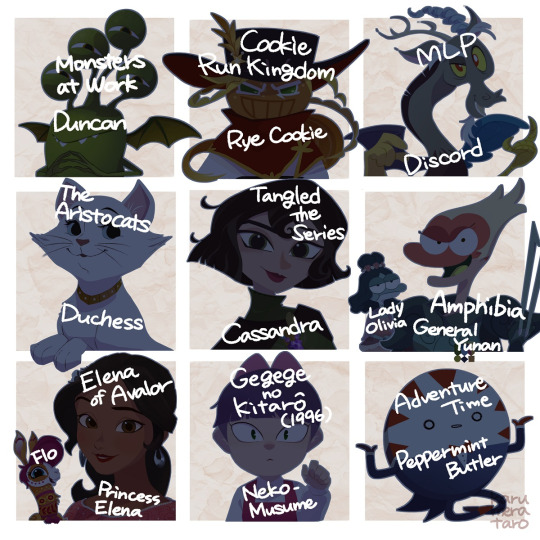
Fav 9+
I drew my favorite 9(?) characters for practice. If there is also your favorite, give me high five🙋
#fanart#tangled the series#tangled the series fanart#cassandra#monsters at work#duncan#cookie run kingdom#cookie run kingdom fanart#rye cookie#my little pony#my little pony fanart#my little pony discord#the aristocats#duchess#amphibia#amphibia fanart#general yunan#lady olivia#elena of avalor#princess elena#flo#gegege no kitaro#nekomusume#adventure time#adventure time fanart#peppermint butler
265 notes
·
View notes
Text
dontstandmedown replied to this post:
re:tags could you share the playwright you're talking about? :0
No problem! For others, the tags in question are this:
#thinking about this partly because the softer & gentler versions of fanfic discourse keep crossing my dash #and partly because i've written like 30 pages about a playwright i adore who was just not very good at 'original fiction' as we'd define it #both his major works are ... glorified rpf in our context but splendid tragedies in his #and the idea of categorizing /anything/ in that era by originality of conception rather than comedy/tragedy/etc would be buckwild
I am always delighted to share the good news of John Webster! If you're not familiar with him, he was an early seventeenth-century English playwright known for being a slow, painstaking, but reliable writer. He did various collaborations with other playwrights (and acknowledges a bunch of his peers in an author's note to The White Devil, including Jonson and Shakespeare) and wrote some middling plays in various genres that could be more or less termed "original fiction," but he's remembered for two brilliant, bloody tragedies.
The basic premises/plots of both of these were essentially ripped from the headlines of the previous century, and Webster makes zero attempt to conceal that fact.
I couldn't shut up about my guy so more under a cut!
The White Devil is based on the actual murder of Vittoria Accoramboni in the late sixteenth century and the characters in the play are generally given the same or similar names as the real life people in the story as known at the time, so there's no attempt to conceal the play's origins (the anti-heroine/villain???[debatable] is named Vittoria Corombona in the play, for instance).
The original production of The White Devil largely failed, which Webster blamed mainly on bad weather and an audience who just didn't get his ~vision and what he was trying to do. It would not be unsurprising for a contemporary audience to struggle with it given that it's a complicated play in which, among other things, Vittoria is put on trial and rhetorically shreds the underlying misogyny of the entire legal process.
The Duchess of Malfi, generally considered a still greater achievement, is based directly on the murder of Giovanna d'Aragona, Duchess of Amalfi by her brothers (it was presumed, likely correctly). Lope de Vega also wrote a play about this tragedy not long before Webster did, though the plays are very different and it's unlikely that Webster would have had the time or linguistic knowledge necessary to read Lope's version. Probably part of the reason for the differences between Lope's and Webster's takes is that Lope had to be careful about the reception by the Catholic Church given that one of the murderers was a cardinal, while obviously an English Protestant like Webster could say whatever he wanted about eeeeevil cardinals.
Webster takes a lot of artistic license, a normal approach at the time to adapting previously-established narratives, but the source material is very recognizable. One of the commendatory verses at the beginning of the play (blurbs in poetic form from other playwrights) is like "I'm sure the real duchess was cool but she couldn't be as cool as Webster's heroine, wow <3". (One of the other commendations is by another fave of mine, John Ford.)
Bosola, the historically mysterious minion of the Duchess's murderous brothers (=Bozolo in the historical narrative) gets an elaborate quasi-redemption arc in the play. And the play is extremely critical of various characters' obsession with and attempts to control the Duchess's sexual behavior (a fixation that is often extremely normalized in early modern British drama, but which comes off really badly here).
Ultimately this obsessiveness leads to her brothers, the Cardinal (=the historical Cardinal Luigi d'Aragona) and Ferdinand (=Carlo d'Aragona) orchestrating her torment and murder in which she emerges with her sanity and integrity intact and dies with dignity. Meanwhile, the Cardinal is exposed as a remorseless villain (he proceeds to murder his mistress with a Bible) and Ferdinand's already-shaky sanity snaps under the realization of what he's done.
Webster's Duchess is often considered the first real female tragic hero in British drama—the tragic is especially significant because tragedy was typically considered a higher art form than comedy and the truly great female characters from that era of drama are often restricted to comedies or secondary roles in tragedy (a marked trend in Shakespeare, for instance). The Duchess in the play is virtuous, strong-willed, witty, and fairly unabashedly sexual in the context of the time, a concept that several hundred years of critics have struggled with. (My favorite OTT complaint is from Martin Sampson, an early 20th century critic who lamented the conspicuous absence of a "strong active man, following righteous things" in Webster's work, to which I say l m a o.)
Anyway, among scholars of early modern British drama, Webster is often considered second only to Shakespeare as a tragedian, on the basis of those two plays. And the modern obsession w/ originality and novelty makes this kind of fascinating, given that his "original" work (in our sense—again, the original vs fanfic dichotomy was not a thing in that cultural context) is sort of meh but his work with pre-existing sources turns them into these staggering dramatic achievements.
#dontstandmedown#respuestas#renaissance blogging#john webster#the white devil#the duchess of malfi#anghraine's meta#ivory tower blogging#gender blogging#long post#i love vittoria and the duchess and also how pissy he is about people complaining about his slow writing#'yeah well that's what mediocre rapid content generators said to EURIPIDES and who do people remember now? THINK ABOUT IT'#okay okay i'll stop with My Guy but. he's pretty cool.
37 notes
·
View notes
Text
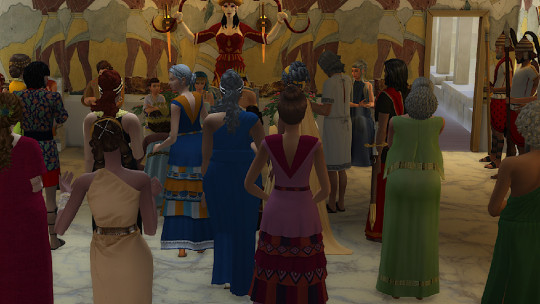

The agreement was made, and the wedding became expensive, just as Queen Alkmini had predicted. There were many prominent guests, and even the big throne room filled up.

The bride and groom didn't seem overjoyed, but perhaps they were affected by the seriousness of the moment.
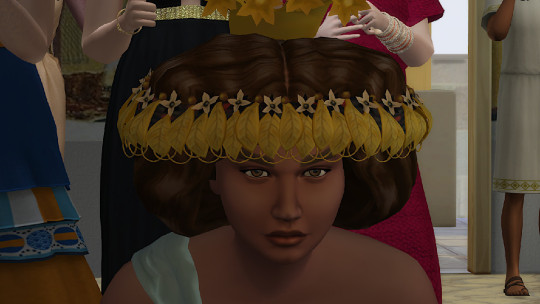

The King of Koiláda Chalkoú was invited but did not come to the wedding. He was probably still a bit crossed, even though he had received a handsome compensation, in form of horses, cattle, gems and precious metals. However, he did send his sister to represent him at the wedding, the incredibly beautiful Princess Amphiera.

Other honorable guests were of course Prince Heraklis and his family. It was the first time little Myrrhini was attending publicly, but she seemed more interested in the birds outside than in the wedding ceremony.

The bride's family were also there, even if it was quite a long journey for them, and for that reason little prince Philokratis was left at home. Queen Laonome was not feeling well, it was possible that she was expecting again, so they took a more discreet position in the throne room, to be able to slip out to the private chambers if necessary.

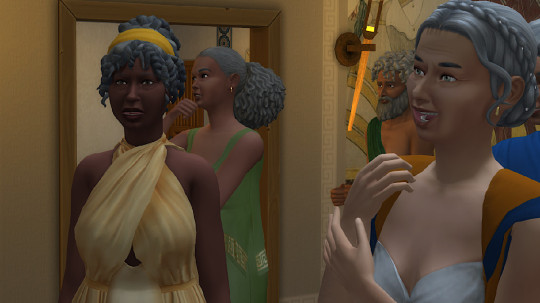
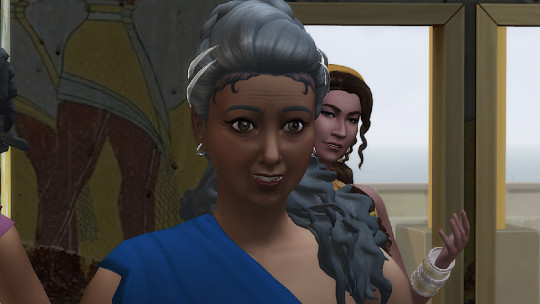
The distinguished ladies of Manthos were all there, of course, and Kyria Figaleía wouldn't miss it for the world.




It truly was a grand celebration, and everybody agreed that it had been a fabulous ceremony.

Except maybe for the bride and groom.
.
Previous | Index | Character overview | Next
#KyriaT#KyriaT-stories#Chapter Eleven#ts4 story#sims 4 story#history challenge#ts4 history challenge#Generation 2#Early civilization sims#Early civ sims#Once Upon A Time#The First Ones#King Mijararos#Queen Euthalia#Queen Alkmini#Prince Heraklis#Princess Konchylia#Duchess Ζosimih#Duchess Myrrhini#Prince Linos#Princess Ofelia#Princess Amphiera Chalkiou#Kleomenis Trypitis#Nafpaktios Elis#Leotychidas Trypitis#Figaleía Eláïom#simblr
28 notes
·
View notes
Text
"Anne Stanhope was a devoted and loyal wife and mother. She was also a politician, a committed religious reformer, and a survivor of Tudor intrigue. It was her actions and her connections at court that saved the Seymour family from ruin throughout the reigns of Edward VI, Mary I, and Elizabeth I. Her activities as a patroness of religious literature distinguished her from many of her contemporaries. Anne also worked with both of her husbands – but with Edward Seymour in particular – to form influential political partnerships. Like many of her female contemporaries, she was a major force in politics and religion. The Duke and Duchess of Somerset’s struggle with Thomas Seymour in the late 1540s, however, set the groundwork for Anne’s unfortunate historical image. Almost immediately, writers and historians slandered her reputation. She became a stereotypical “bad wife” – proud, nagging, vengeful. By looking beyond this image, however, scholars may now view Anne Stanhope’s story in a more balanced light."
-Caroline Elizabeth Armbruster, '"A woman for many imperfections intolerable": Anne Stanhope, the Seymour family, and the Tudor court', (MA thesis, Louisiana State University and Agricultural and Mechanical College, 2013)
#This thesis is online if anyone wants to read it!#historicwomendaily#anne stanhope#edward seymour#seymours#tudors#ngl I didn't know much about Anne Stanhope (or the Seymours - sans Jane - in general) so this was an interesting read!#I think it may have misunderstoodsome stuff about Edward Seymour's first marriage to Catherine Filliol though#as it claimed that Edward repudiated her which I'm not sure happened (and that she entered a nunnery which I'm not sure we have#solid evidence for either)#though admittedly like I said I don't know much about the Seymours so I could be wrong#my post#this has been in my drafts for months adkjsksks#tudor era#16th century#anne seymour#anne seymour duchess of Somerset#anne stanhope duchess of Somerset
30 notes
·
View notes
Text
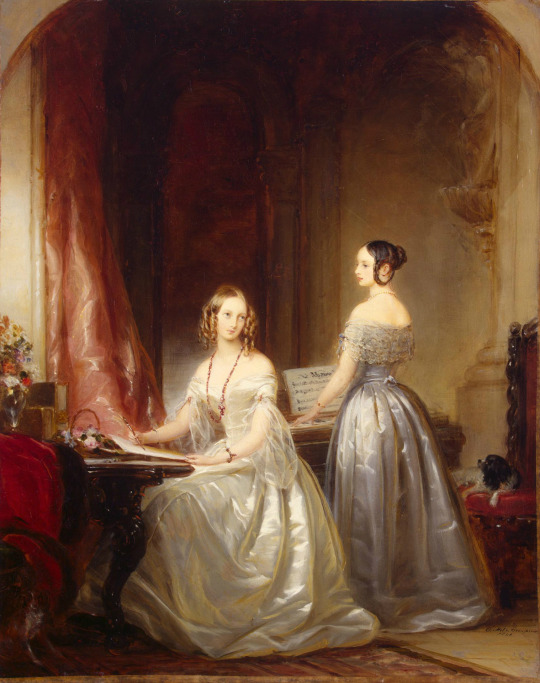
“Grand Duchesses Olga and Alexandra Nikolaevna were of such amazing beauty that, in my opinion, they had no rivals in the aristocratic world at that time.”
- Count Mikhail Buturlin
“The Grand Duchess Olga Nikolaevna, beloved of all the Russians; it is indeed impossible to imagine a more lovely face, which would express such a degree of gentleness, kindness, and tolerance. She is very slim, her face translucent, and her eyes have that unusual sparkle which poets and lovers describe as heavenly […] The very youngest grand duchess, Alexandra […] still has something of the child in her; she is very lively and mischievous, and is promising to be the most beautiful of all the sisters.”
- Dutch General Friedrich Gagern
#grand duchess olga nikolaevna the elder#grand duchess alexandra nikolaevna#romanov#russia#count mikhail buturlin#general friedrich gagern#quotes#christina robertson#portrait
77 notes
·
View notes
Text
I was dodging the topic of Kate and Meghan as long as it was possible but i have to say that i absolutely love these AI-generated pictures


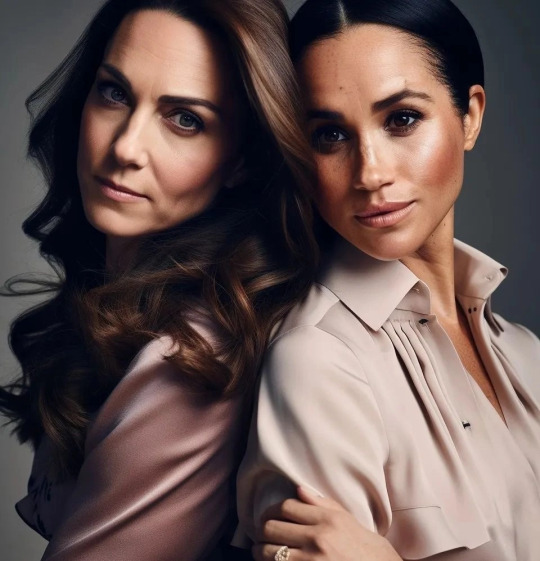
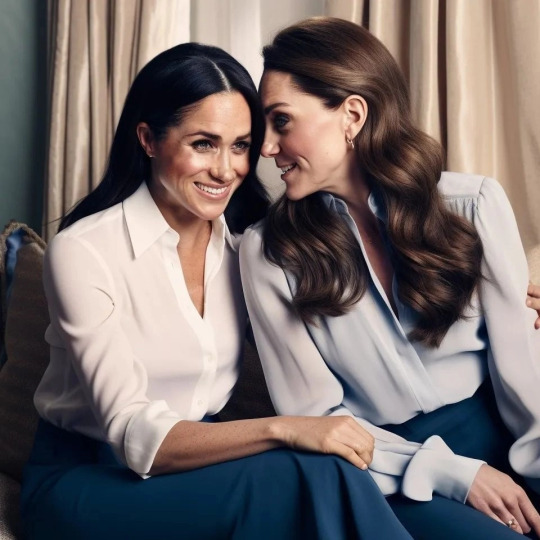

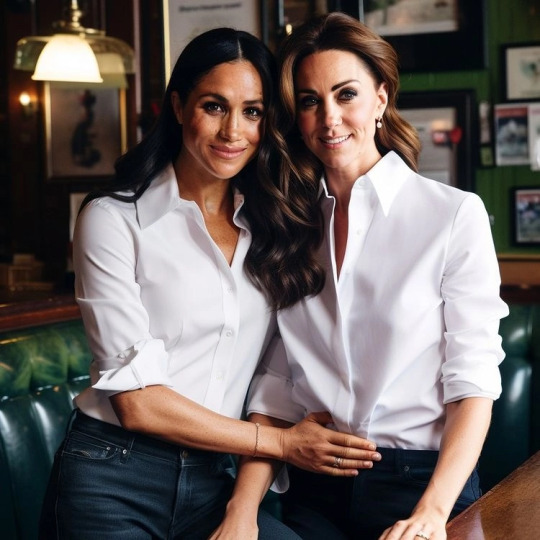


first of all, the quality is outstanding
secondly, i love this dynamic and wish it were real
#british royal family#british royal fandom#brf#british empire#princess of wales#british royals#british royalty#catherine middleton#kate middleton#princess kate#meghan and harry#meghan markle#duchess of sussex#duke and duchess of sussex#ai#ai artist#ai generated#ai art
105 notes
·
View notes
Text
Ever after high fandom, I've made a discovery.










They all share the same voice actor! Huh. You learn a lot just by browsing IMDB and Behind the voice actor, don't you?
#ever after high#eah#I LITERALLY CAN'T#ALDER AND ARCHIE????#In masters giles is alder#and in generations milton is archie BUT STILL#Two of my favorite pokemon characters.#but also?? duchess is mei??#whack!!#i've never watched cowboy bebop or sonic boom but i had to put them here.#also apparently#ravens voice actress was in gen 1 monster high. so was apples.#And also apparently headmaster grimms (milton) was in akira but#i've also never watched that so.#gengar rambles#insane!!
19 notes
·
View notes
Text
Well, well, well.
Just as I thought, the stupid wife is going to attempt to use the titles.
I bet we’re going to get a back-and-forth in the press over this.
Harry’s wife is too dumb to realize that it’s more embarrassing in the long run to claim a title and have it taken away than to never have lost something to begin with.
Looks like she’s going to be in for a rude awakening in the next few weeks with all her machinations. She’s going to be subject to sudden changes in her career/public perception over the next six to eight weeks. And the changes will start happening next week, even if we don’t see them publicly.
She just doesn’t know how good she used to have it...

#well well well#titles 'n shit#that dumb prince's stupid wife#duchess of I NEED PRESS#duchess of I WILL NOT BE IGNORED BRF!!!#pr games#Harry's Wife's Public Reputation Management#The Circus Generating Machine also known as Fleet Street
86 notes
·
View notes
Text
@sankta-alina-s sent an ask //
❝ the realm owes you a great debt. ❞
The enemy had been pushed back, and perhaps that was cause for celebration among the nobility, the royal family. Not that they did much to ensure such a victory, of course, but any chance the Lantsovs had to congratulate themselves would obviously not be wasted.
Even if he and the others of the Second Army had been the ones actually succeeding.
But he'd fought that argument over and over; it rarely, if ever, amounted to anything. So Aleksander merely nodded at her.
❝ If only you knew, ❞ the Darkling muttered under his breath, but he forced a smile nonetheless. Like he was actually gracious, even if every bone in his body wanted to annihilate the royal family.
❝ I do what I can for Ravka, Duchess. That is all. ❞
14 notes
·
View notes
Text

~ ♔ 3 Generations ♔ ~
♔ Princess Viktoria Louise, Duchess of Brunswick (née Princess of Prussia) with her daughter Queen Frederika of Greece, and newborn granddaughter Princess Sofia of Greece (later Queen Sofia of Spain), 1938 ♔
#viktoria Louise never ceases to be beautiful! 🤍#3 generations#princess Viktoria Louise of Prussia#Princess Viktoria Louise of prussia#Princess Victoria Louise of prussia#prussian royal family#queen Frederika of Greece#Queen frederica of greece#Princess Viktoria Louise Duchess of Brunswick#queen sofia of spain#greek royal family#spanish royal family#1938
17 notes
·
View notes
Text



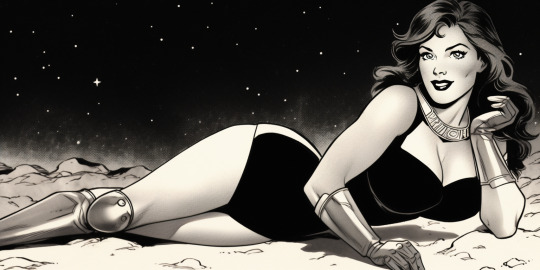

Duchess Quasara Posters
Based on her appearances in "True Life Tales of Science Fiction", prior to the release of Knights of the Lost Star.
These were alternate takes that weren't used for the poster advertised in "The Secret Origin of Wally Manmoth"
Prompt: line art illustration of lynda carter as a space amazon, sci-fi roman armor, singlet, tall boots, reclining on the ground, pose, laying on her side, head propped up on one hand, smiling, in the style of vintage pin-ups, B&W comic book inks, full body, whiplash curves, smirk, jack kirby and gil elvgren, swirling patterns in background:: beautiful space-queen in singlet and boots laying on the ground, techno-crown, on her side, smiling, by akiman and john byrne, 1996
9 notes
·
View notes
Note
omg i love your readings about marriage and personality compability 😊
Could you tell us about the marriage between prince william and princess kate? Do you think the rumors about him having a misstress (rose hanbury) are true?
🩷🩷🩷🩷
Thanks!
No comment about him and Rose - I won't be reading that. (Will use Kate and William to address them - not out of disrespect but easier to type)
Prince William and Kate have reached a point in their marriage where they see each other more like family members than lovers. They are now connected to each other by their love for their children and their duties as members of the royal family. They don't have much romantic love between them anymore; that was died down after years of marriage. They are more like close friends who talk to each other about work, children, and the family.
Kate doesn't bother that much with William's private life anymore. They both have an unspoken rule that so long as their private affairs are kept private, then they are pretty much free to do whatever they want. Should either of them have a lover, that must not be known to the public and the family/children will always take priority.
They've had their share of arguments, but I see Kate taking more of a back seat now like she doesn't care so much about William in terms of romantic love. She feels very drained and tired when she cares too much about William. She chooses to focus her attention elsewhere.
William doesn't like it when Kate tries to control him or tell him what to do. Now that Kate doesn't really "bother" him they are coping in the marriage.
I feel their chances of divorce are lower because they have strong beliefs to maintain the image of a happy family, for the sake of the children too. They're more of a couple that'll stay in the marriage for the children with a possibility of separating/divorcing once the children are much older like in their later teens or in their early 20s. If they do divorce earlier or divorce, then I'd see it more of Kate wanting to have a fresh start for herself or possibly William wanting to be with another person for marriage.
#psychic readings#celebrity readings#relationship readings#love readings#general readings#prince william#british royal family#royal family#psychic predictions#marriage readings#kate middleton#duchess of cambridge#princess of wales#prince of wales#william#kate
12 notes
·
View notes
Text
Katherine of York:
Henry (VIII)’s fondness for his aunt was once again demonstrated when in 1512 he granted Katherine all the Courtenay estates in Devon for the term of her life, and to be passed to her children upon her death. This act gave Katherine her much needed security, although did she have to make a sacrifice to pay for it? For shortly after William’s death, Katherine took the following vow of chastity:
In the name of the Father, the Son, and the Holy Ghost, I, Katherine Courtneye, Countess of Devonshire, widow, and not wedded, ne unto any man assured, promise and make a vow to God, and to our Lady, and to all the Company of Heaven, in the presence of you, worshipful Father in God, Richard, Bishop of London, for to be chaste of my body, and truly and devoutly shall keep me chaste, for this time forward, as long as my life lasteth, after the rule of St Paul. In nomine Patris et Filii et Spiritus Sancti
The romantic perspective of course is that she took the vow because she deeply loved her husband and had come to a decision that she did not want to marry anyone else. This may well have been the case. But there is also a hypothesis that perhaps this vow may have either been a condition of Henry’s grant to her, or a condition Katherine placed upon herself to keep her lands and property safe. As the daughter of a Yorkist King, as much as Henry had a real regard for her, he may not have felt the same about any future man that she may have chosen to marry. There is no proof that he asked her to take the vow of chastity, but it may have been a bargaining tool that saw him grant her the estates, ultimately giving her security without the threat to himself of a new husband at some point in the future using her lineage to threaten the throne. But it may also of course have been something that Katherine decided was in her own best interests. Widows in medieval times were able to run their own estates and take care of their children but once they remarried, their power completely diminished and they once again because subservient to their husband. Having been through so much upheaval and insecurity, this was finally Katherine’s chance to take control of her own destiny once and for all and she must have grabbed the opportunity with both hands, never again having to rely on anyone else for help and support.
Once William had died Katherine spent less time and court and much more of her time on her Devon estates. She remained in favour with her nephew, Henry VIII, giving and receiving gifts from him, as well as several wardships. She was also given the honour of being godmother to Princess Mary.
As a femme sole, Katherine was now able to make a comfortable life for herself in Devon, and it seems she became a well-liked and respected member of the community. Her main residence was Tiverton Castle, which today is a privately owned house which the owners open up to the public. In an inventory taken in 1538 after the death of her eldest son, the castle is described as a mansion, moated, walled and embattled, with houses, offices and lodgings ‘well-kept and repaired’ with fair gardens and two parks. It was originally built as a motte and bailey castle in 1106 by the de Redvers family, the first Norman Earls of Devon. As the centuries moved on, the castle was altered and enlarged and exhibits today all periods of architecture from medieval to modern, along with beautiful walled gardens.
...For over fifteen years she lived here in relative peace and comfort, keeping in touch with her friends and family in London by letter and perhaps travelling to London and the court for special occasions. Household accounts that have survived from the period 1522-23 and 1523-24 detail payments to messengers for taking correspondence to the King and Cardinal Wolsey. She used for her title and seal ‘the excellent Princess Katherine, Countess of Devon, daughter, sister and aunt of Kings’ and in official documents, signed herself Katherine Devonshire.
She also paid a servant who took four horses to her daughter in London and remembered her husband William by paying for a mass on the anniversary of his death. A London Chandler was likewise paid for a year’s supply of wax for Lord William’s tomb.
Katherine ran her own estates with network of stewards and servants; some of her properties were administered for her by a bailiff, and some paid rent directly to her. Her influence was felt throughout the local area, an example of which can be found on a rood screen in Kenn church, which contains a panel to Saint Bridget and is the only known surviving example of a depiction of the Bridget cult in the south-west. The Courtenays presented to Kenn church and before its restoration in the nineteenth century the Courtenay arms were reportedly seen by antiquarians in the east window of the chancel and in a window in the south aisle. It is not believed that Katherine paid for the screen but the presence of Saint Bridget on one of the panels does suggest her influence, particularly because of her family connection to Saint Bridget, the saint whose name her younger sister bore. Katherine did visit the church at Kenn as she presented the new rector, Thomas Mitchell, in 1517. She certainly had a reputation in the parish for her generosity in the giving of alms and was a patron of several religious orders, inviting their members to come and preach at Columbjohn. The rood screen can still be seen today in St Andrew’s church in Kenn. During the reformation, many rood screens were renamed chancel screens but were often defaced or destroyed in an attempt to remove the images of saints and catholic idolatry. Amazingly the Kenn screen survived and it was renovated to its former glory in the nineteenth century.
... What we can also glean from these records is her generosity to staff. Philippa, her maid, upon her marriage received £6 13s 4d and Katherine also covered the cost of velvet for her wedding dress and kirtle, the cost of making the outfit and the cost of the wedding. ‘Andrew of the kitchen’ had garments made for him and her fools, Dick, Mug and Kit were well provided for as she paid for the mending and washing of their clothes. In her Will of 2nd May 1527 she made provision for her servants to be provided for a year after her death. For the Christmas festivities, she bought a ‘gallon of honey, apples and pears bought against Christmas’. Players who performed before the Countess on New Years’ Eve and New Years’ day were paid 13s 4d. Payments for the King and Queen’s New Year gifts are listed as well as a gift to her son of two buckles, two pendants, six studs, six oiletts, six aglets (a metal tube wrapped around a shoelace) and gold and enamel garters.
Katherine, on her estates far away from London, would almost certainly have had an opinion on the goings-on at court but that opinion of course was never recorded. Staunchly catholic as she had been brought up, she would likely have received news of her nephew’s intentions to divorce Catherine with some dismay; she would have known and met Catherine of Aragon on more than one occasion. Thankfully she did not live long enough to witness the arrest and execution of her son. As the King removed the threat of any remaining Yorkists, you cannot help but wonder whether his deep admiration and regard for Katherine would have been enough to save her had she still been living, or whether she too would eventually have fallen under his suspicion. But as it was, she did not even live long enough to see Anne Boleyn finally usurp her rival to become Henry’s second wife, as on 15th November 1527, at 3pm in the afternoon, she died at her home in Tiverton. She was forty-eight years old. Her body was embalmed, cered, leaded and covered with a pall of black velvet, with a cross of white satin. Upon that was placed another pall of cloth of gold with a white cross of silver tissue garnished with six escutcheons of her arms. Katherine’s body was attended day and night until Monday 21st December, when mourners wearing black hoods and gowns and carrying banners depicting the saints, escorted her body to Tiverton parish church under a canopy of black velvet. The coffin was placed under a richly decorated canopy, which was guarded all night by attendants. The mourning party then returned to Tiverton Castle for a meal.
At 7am the next morning, the mourners returned to the church where a requiem mass was sung by the Abbot of Montacute, who was supported by choristers from the nearby city of Exeter. In honour of his aunt, the King sent one of his chaplains to deliver the sermon. Her Chief mourner was Lady Carew, who was assisted by Sir Piers Edgecombe. After the service, her body was buried in a vault in the Courtenay chapel on the north side of the church (probably near the site of the present vestry). Her funeral was attended by five hundred mourners including the Mayor of Exeter and City Alderman and was a testament to her popularity. After her death, eight thousand poor people were paid two pence each on the condition they prayed for her soul. In her memory, her son Henry had a tomb erected, of which there is no longer any trace; it was very likely a casualty of the Civil War.
Katherine was still living when Thomas More was writing his History of King Richard III between 1513 and 1518, and his description of her is a perfect summing up of her life. He tells us Katherine was ‘long time tossed in either fortune, sometimes in wealth, oft in adversity, at the last – if this be the last, for yet she liveth – is by the benignity of her nephew King Henry the Eighth in very prosperous estate and worthy her birth and virtue’. She did not live long enough to see the outcome of her nephew’s ‘great matter’ that brought about not only his divorce but also radical changes to the religion that Katherine would have held so dearly. And she managed to live out her final years in peace and security and also, one hopes, she managed to find happiness. After all the adversity she experienced in her early life, this Princess of York may not have ended up as Queen of Spain as was originally intended for her by her father, but she managed to obtain for herself her own little kingdom where she could reign as Duchess of Devon.
Sarah J. Hodder, "The York Princesses: The Daughters of Edward IV and Elizabeth Woodville"
#historicwomendaily#apart from Elizabeth (obviously) Katherine is the most interesting York daughter to me#obviously it helps that we know a lot more about her than the others#comparatively speaking that is. in general we know frustratingly little about any of them (apart from Elizabeth naturally)#katherine of york#catherine of york#16th century#english history#henry viii#queue#(also was she a duchess? she married an Earl's heir so I don't think that's the term? oh well)#my post
22 notes
·
View notes
Text
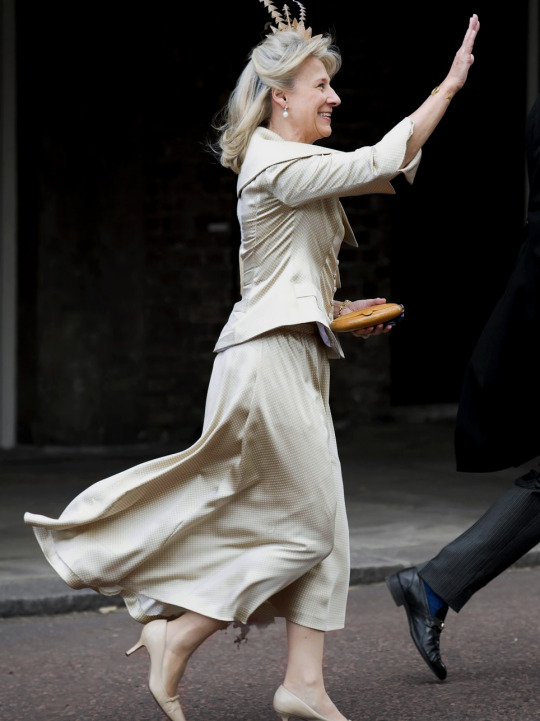
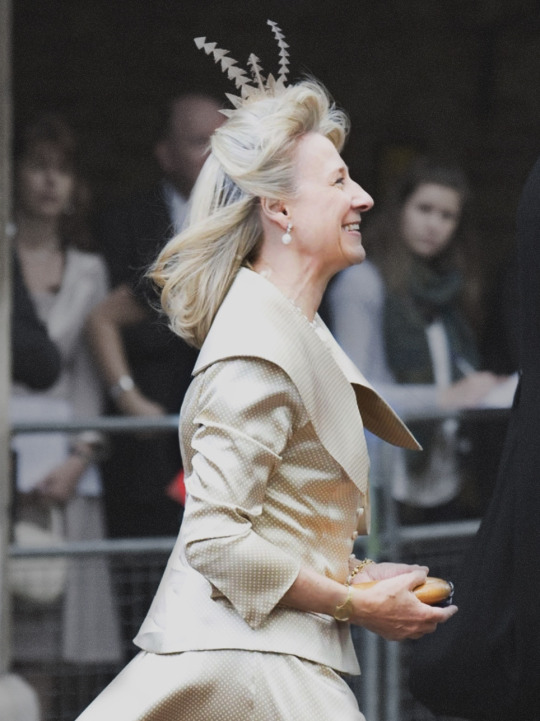
19 July 2008
The Duchess of Gloucester at the wedding of her daughter Lady Rose Windsor at the Queen's Chapel, St James's Palace, London
#i am so in love with her smile#🥹#and HER in general#such a lovely woman#duchess of gloucester#my edit
25 notes
·
View notes